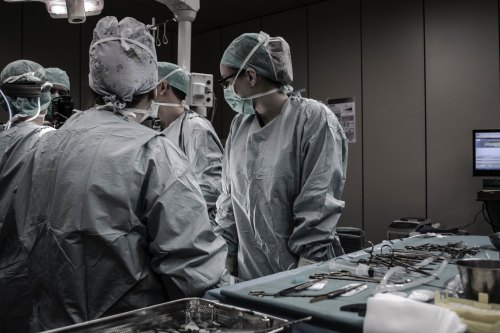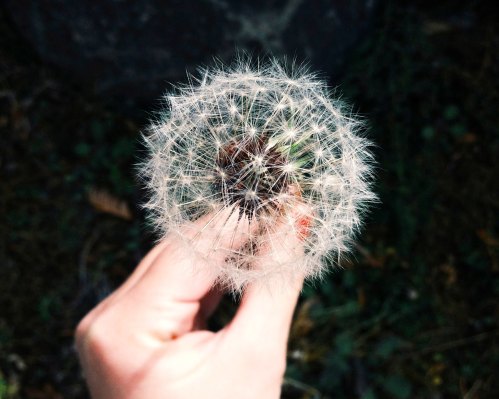Before I gave birth, I envisioned myself having tea and pastries with a group of moms bitching about all the sleepless nights we’ve had while our babies nap.
None of that happened. The sleepless nights—sure, those happened. None of the tea and pastries with the moms though. But that’s my fault, right? I didn’t enroll in a prenatal yoga class, I didn’t join a centering group (mostly because I was too far along when I looked into them), and I didn’t really click with any of the women I was in a class with. So where does that leave me? Alone with my baby after my husband’s paternity leave ended and having to think of ways to entertain myself while my baby naps.
It can get lonely, and I hope you’re ready for it, Mama.

You might think it’s perfect—I’ll catch up on my reading, walk a lot, see that shop I’ve been meaning to visit. Yes, sure, that’s all nice and dandy. But who do you talk to? Who commiserates with you about your anxiety about this person you brought to the world who’s fully dependent on you? Who says “Oh my gosh, yes!” when you talk about how you can’t even go to the bathroom because you’re too scared your kid will stop breathing? I know it sounds extreme, but you will have those moments. And you probably need someone to share them with who knows what you’re going through. If you’re the first in your circle to have a baby, it’s not going to be the same dynamic once you start yammering away about your child’s poop. Yes, your partner will listen to you for sure, but unless they’ve pushed a human out of their body, it is just not the same.
When you search for “loneliness in pregnancy” online, you’ll find a dearth of scientific articles and plenty of mom blogs that discuss the subject. Why is that? Loneliness is not popularly studied on its own. It is often interspersed with depression or grief. Couple that with the special subset of pregnant women, and you’ll have even less material to choose from.
Harry Stack Sullivan, an American Neo-Freudian psychiatrist, described loneliness as the most painful human experience. He commented on the “driving force” of loneliness—a force great enough, he pointed out, to cause people who were normally painfully shy to aggressively seek social activity.
So what can we do to alleviate this pervasive feeling?
Go out at least once a day.
I’ve found that this improved my mood immensely. Start with getting dressed. If you can shower, thank the heavens and jump up and down. If not, just put on clean clothes. Staying in your jammies will not coax you into conquering the day.
If you wanna take the extra step of doing something repetitive, that’s even better. Whether it’s postpartum yoga or Pilates (makes sure diastasis recti is not a concern), a daily park visit, or dropping by your corner store for a fruit fix, a scheduled activity forces you to get out of the house and do something.
Go somewhere that will make you happy.
It doesn’t matter if it’s a coffee shop, a bookstore, the supermarket, or the park. The fact that visiting a place makes you happy is already a win. I went to a bistro that had tables outside where I could read a book or solve a crossword puzzle while my baby napped. It was ah-mazing.
Try to meet with people.
I know I said it’s a different dynamic with friends who don’t have kids but it doesn’t mean they don’t want to see you or hear about what you’re going through. They do. They probably don’t wanna hear about your kid’s poop for a straight hour but they want to hear how you’re doing. And if it’s done over delicious brunch or mimosas (virgin or not), muuuuch better. Try to schedule it during nap times so that you focus on your conversation instead of having to divide your attention between your child and your friend.
Talk to people.
Lucky for me, I got to video call my mom and sisters. I know it’s not the same thing. Having someone there physically to hear your trials and tribulations about taking care of a living being who cannot communicate is certainly better, but it got me through some tough moments.
When you go to the places that make you happy, strike up a conversation with someone there. The person behind the counter at a bookstore, the barista at your favorite cafe, and if you’re lucky—that other mom who’s also toting a baby. So many other people want to talk, too. You’ll be surprised how many people would love to strike up a conversation. You just need to start.
Talk to your partner. Even if they don’t understand it fully, they know enough to support you through this tough time. If there is something deeper and stronger that is taking over, they will be the one to get you some help if you’re not doing it already. Even if it’s just talking about the frustration or the boredom during the day, force them to listen if you have to.
Find some moms. Or not.
There are mom groups everywhere. You don’t have to pay for a class or for membership. Check out resources out there. There are Meetup groups, Facebook groups, and other local maternal resources.
I also started organically talking to some moms in my extended circle. And sometimes the experience of having children magically breaks down some barriers you’ve had before. Someone you thought you never would be friends with all of a sudden has so many things in common with you.
Because it is very common—these child-rearing ups and downs—everyone has them. EVERYONE. Don’t be scared. Reach out. Chances are those moms know about being lonely. They’ve gone through it, too. You are not alone.
Or you can also choose not to seek out other moms. I had some occasional visits with mom friends but no regular meetings that I would go to. That worked for me, coupled with regular friends, and that could work for you as well.
You’ll get your own rhythm and system. It takes time for this to happen but it’s good to know all the things that you can do.
Get some help.
I mean this in the broadest sense. If you’re getting overwhelmed with taking care of your little one such that you aren’t able to take care of yourself, get some help. Or even when you just need time to do other things that aren’t home-related or child-related. Whether it’s a night time doula, a house cleaner, a Postmate to deliver you food or get you some supplies—it’s worth it if it saves your sanity.
When your loneliness is getting the better of you, call your doctor—whether it’s your obstetrician or your family doctor, they can refer you to someone you can speak to about dealing with it. Postpartum depression occurs in 1 out of 9 women, according to a CDC study.
We should not feel embarrassed or ashamed about getting help. We’ve gone through an upheaval, not to mention the hormones that are out of whack. It is perfectly fine to seek help.
Let’s make this the new normal.







